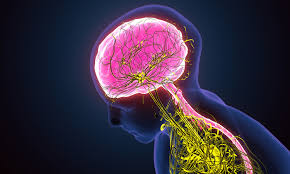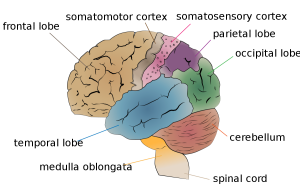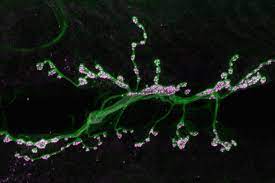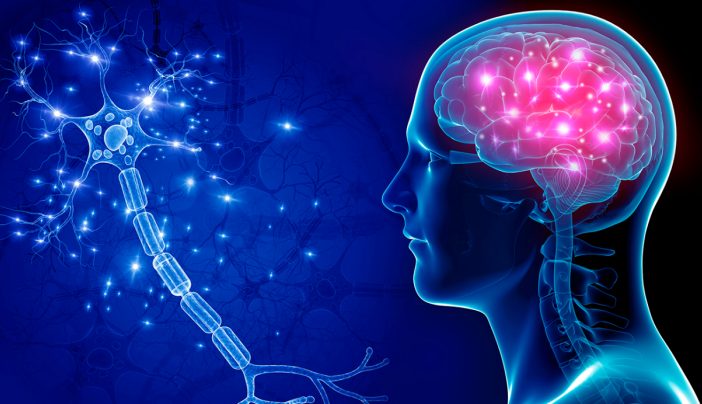Understanding the Essence of the CNS
The Central Nervous System (CNS) stands as a pinnacle of biological marvel, comprising the brain and spinal cord. Serving as the central command center, it intricately controls a myriad of bodily functions, including thought processes, movement, emotional responses, and the regulation of essential physiological aspects such as breathing, heart rate, hormones, and body temperature.
Key Insights into the Composition of the CNS
1. Comprehensive Structure: The CNS, encapsulated within the protective confines of the skull and meninges, is a dynamic interplay of interconnected components.
2. Complexity Unveiled: The brain, a remarkably intricate organ, houses an astounding 100 billion neurons and approximately 1,000 billion glial cells, collectively orchestrating the symphony of human existence.
3. Brain Lobes Unveiled: Diving into the complexities, the brain unfolds into four distinct lobes — temporal, parietal, occipital, and frontal — each contributing uniquely to the tapestry of cognitive and physiological functions.

Navigating the Intricacies of the Brain
Marvels Within the Brain
Embarking on a journey through the cerebral landscape, we encounter the cerebral cortex, the outermost layer containing an estimated 15–33 billion neurons. This cortex, the largest part of the brain by volume, intricately connects these neurons into a vast network, facilitating communication and coordination.
The Symphony of Brain Regions
- Cerebral Cortex:
- Outer layer with 15–33 billion neurons forming a vast network.
- Diverse Brain Regions:
- Basal Ganglia: Regulates voluntary movements.
- Cerebellum: Controls precise motor functions, language, and attention.
- Broca’s Area: Critical for language processing.
- Corpus Callosum: Connects brain hemispheres for communication.
- Medulla Oblongata: Governs involuntary functions like breathing.
- Hypothalamus: Influences body temperature, thirst, hunger, and hormones.
- Thalamus: Central relay for sensory and motor input.
- Amygdala: Involved in decision-making and emotional responses.
- Brain Lobes:
- Temporal Lobe: Processes sensory input, emotions, and long-term memory.
- Occipital Lobe: Manages visual processing.
- Parietal Lobe: Integrates sensory information, touch, and spatial awareness.
- Frontal Lobe: Controls attention, reward, memory, motivation, and planning.
- Collaborative Networks:
- Networks coordinate reasoning, problem-solving, and creativity.
- Neural Marvels:
- 100 billion neurons, 1,000 billion glial cells orchestrate brain functions.
- The brain consumes 20% of the body’s energy.

Delving into the Marvels of the Spinal Cord
The Spinal Cord’s Role as a Neural Conduit
Running almost the entire length of the back, the spinal cord acts as a vital conduit, carrying information between the brain and the body. Beyond its role in information transmission, the spinal cord houses circuits that control reflexive responses and orchestrate complex movements, showcasing its remarkable capabilities.
Illuminating the Distinctions Between White and Gray Matter
| Feature | White Matter | Gray Matter |
|---|---|---|
| Composition | Axons, Oligodendrocytes | Neurons |
| Color | White (due to myelin) | Gray |
| Function | Communication pathway for signals | Information processing, decision-making |
| Location | Deeper brain structures | Outer cortex of the brain |
| Glial Cells | Oligodendrocytes (myelin support) | Astrocytes, Microglia (support and protection) |
| Functionality | Rapid signal transmission | Integration of sensory inputs |
.Celebrating the Unsung Heroes: Glial Cells in the CNS
Central Glial Cells: The Supportive Guardians
Often overshadowed by neurons, glial cells, also known as neuroglia, emerge as unsung heroes. Outnumbering nerve cells 10 to 1, these cells, including astrocytes, oligodendrocytes, ependymal cells, and radial glia, play critical roles in supporting and protecting neurons during development and beyond.
The Cranial Nerves: Neural Bridges Between Brain and Body
Twelve pairs of cranial nerves intricately weave through the body, directly connecting the brain with various parts, predominantly the neck and head. Highlighting the olfactory and optic nerves as integral components linking sensory experiences to the CNS.

Demystifying Disorders Affecting the CNS
Peering into the Abyss of CNS Diseases
From trauma-induced complications to infections invading the CNS, degenerative conditions like Parkinson’s disease, structural defects, tumors, autoimmune disorders, and strokes — understanding the multifaceted causes of disorders that impact the CNS.
CNS vs. Peripheral Nervous System
| Feature | Central Nervous System (CNS) | Peripheral Nervous System (PNS) |
|---|---|---|
| Location | Brain and Spinal Cord | Outside the Brain and Spinal Cord |
| Composition | Brain and Spinal Cord | Nerves, Ganglia, and Receptors |
| Protection | Skull and Meninges | Nerve Sheaths and Connective Tissues |
| Neuron Size | Shorter Axons | Longer Axons |
| Regeneration Capability | Limited | Higher Regeneration Potential (especially in nerves) |
| Controlled Functions | Thought, Movement, Emotion, Regulation | Sensory and Motor Functions |
| Connectivity | Highly Interconnected | Extends throughout the Body |
| Responsiveness to Injury | Limited Regeneration after Injury | Greater Regeneration Potential (Peripheral Nerves) |
| Examples | Brain, Spinal Cord | Cranial Nerves, Peripheral Nerves, Ganglia |
In conclusion,
the Central Nervous System stands as a testament to the intricacies of biological architecture, governing every facet of human existence. This comprehensive exploration unravels the wonders and complexities that make the CNS a captivating subject of scientific marvel and human fascination.




